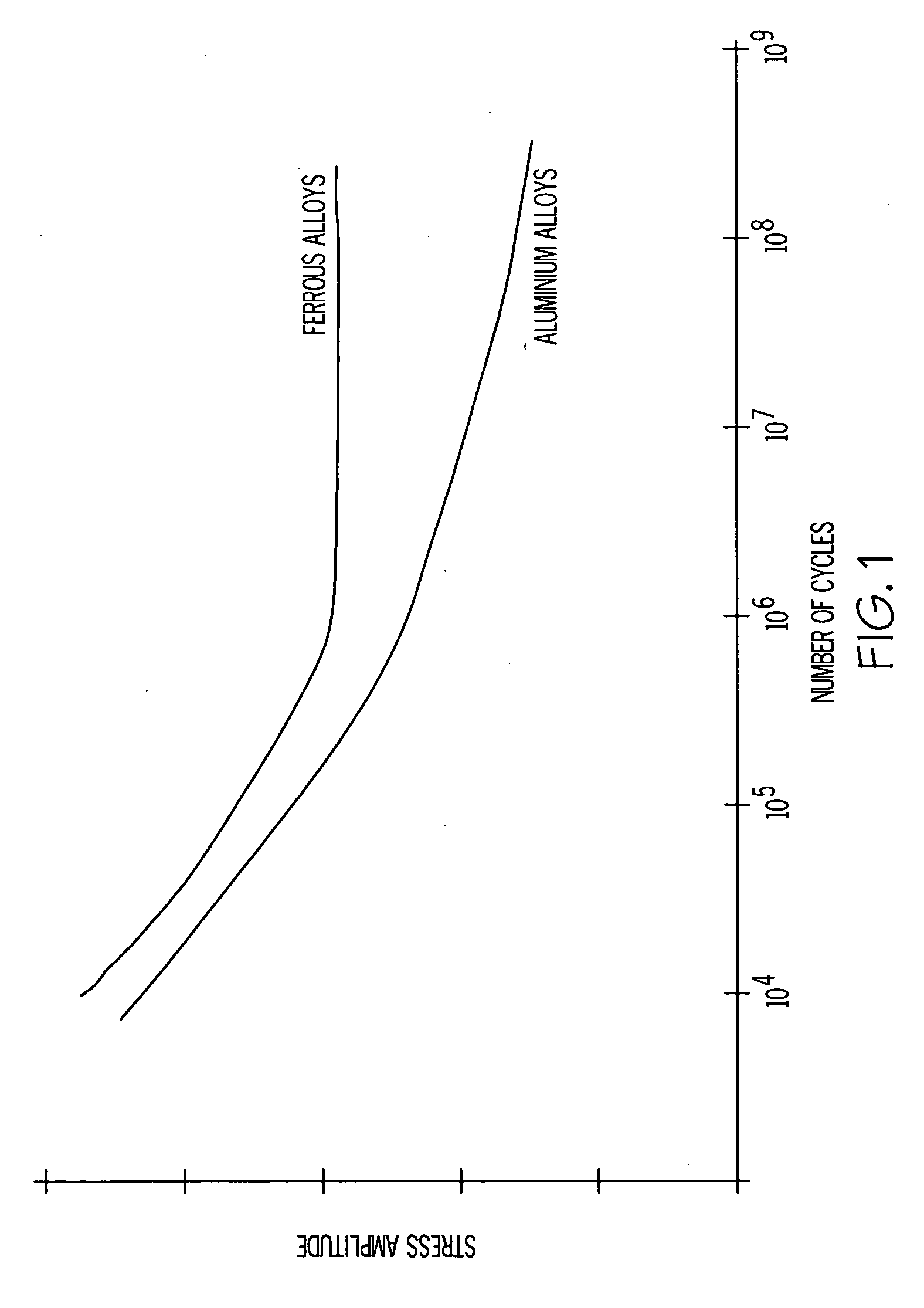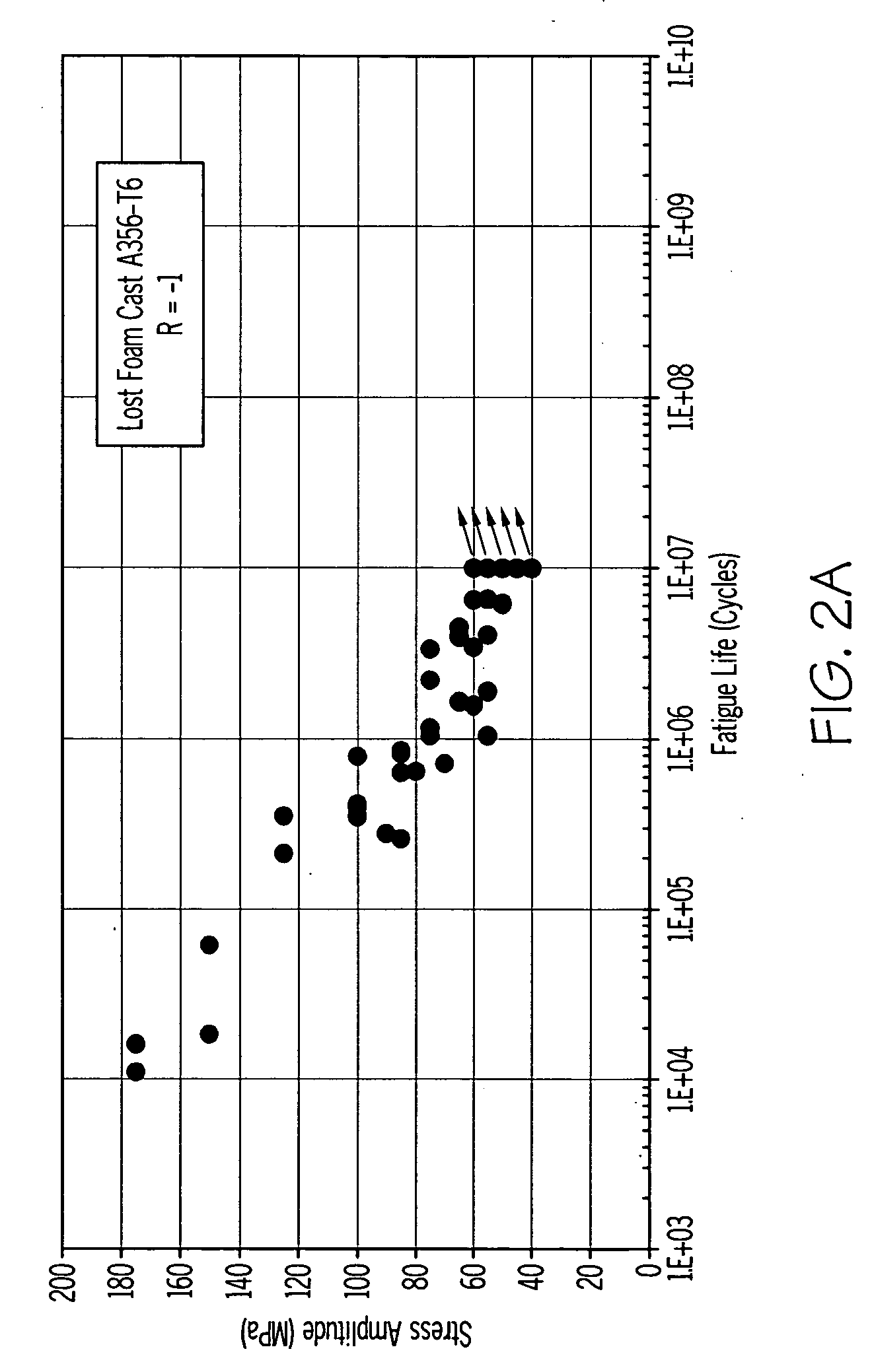Methods and systems for predicting very high cycle fatigue properties in metal alloys
- Summary
- Abstract
- Description
- Claims
- Application Information
AI Technical Summary
Benefits of technology
Problems solved by technology
Method used
Image
Examples
Embodiment Construction
[0022]Referring with particularity to FIG. 4, the MRFL model is used to predict the fatigue strengths of cast aluminum components for very long lives (108 cycles and higher). The MRFL model proposed in this invention is based on an earlier random fatigue limit model where the finite fatigue lives can be calculated as follows:
ln(Nf)=B0+B1 ln(Sa−SL)+ξ (1)
where ξ represents the scatter in fatigue lives, B1 and B1 are constants, and SL is the infinite fatigue limit of the specimen.
[0023]For a given stress state, the scatter of the fatigue lives of cast aluminum components is believed to be mainly related to the presence of discontinuities and microstructure constituents in general, and in particular to their sizes. As such, the present inventors felt that the random fatigue limit model of Eqn. 1 should be modified to incorporate the discontinuity and microstructure constituent sizes, thereby improving model accuracy and applicability to cast aluminum alloys. Eqn. 2 is a representation ...
PUM
 Login to View More
Login to View More Abstract
Description
Claims
Application Information
 Login to View More
Login to View More - R&D
- Intellectual Property
- Life Sciences
- Materials
- Tech Scout
- Unparalleled Data Quality
- Higher Quality Content
- 60% Fewer Hallucinations
Browse by: Latest US Patents, China's latest patents, Technical Efficacy Thesaurus, Application Domain, Technology Topic, Popular Technical Reports.
© 2025 PatSnap. All rights reserved.Legal|Privacy policy|Modern Slavery Act Transparency Statement|Sitemap|About US| Contact US: help@patsnap.com



